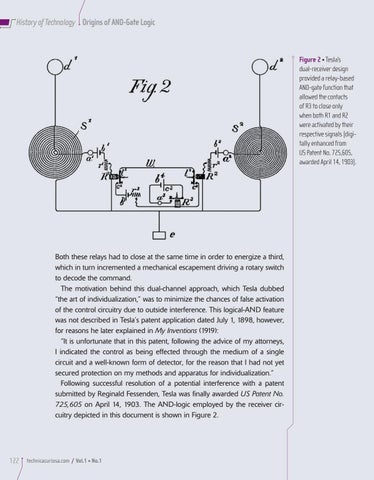History of Technology Origins of AND-Gate Logic
Figure 2 • Tesla’s dual-receiver design provided a relay-based AND-gate function that allowed the contacts of R3 to close only when both R1 and R2 were activated by their respective signals (digitally enhanced from US Patent No. 725,605, awarded April 14, 1903).
Both these relays had to close at the same time in order to energize a third, which in turn incremented a mechanical escapement driving a rotary switch to decode the command. The motivation behind this dual-channel approach, which Tesla dubbed “the art of individualization,” was to minimize the chances of false activation of the control circuitry due to outside interference. This logical-AND feature was not described in Tesla’s patent application dated July 1, 1898, however, for reasons he later explained in My Inventions (1919): “It is unfortunate that in this patent, following the advice of my attorneys, I indicated the control as being effected through the medium of a single circuit and a well-known form of detector, for the reason that I had not yet secured protection on my methods and apparatus for individualization.” Following successful resolution of a potential interference with a patent submitted by Reginald Fessenden, Tesla was finally awarded US Patent No. 725,605 on April 14, 1903. The AND-logic employed by the receiver circuitry depicted in this document is shown in Figure 2.
122
technicacuriosa.com / Vol.1 • No.1
